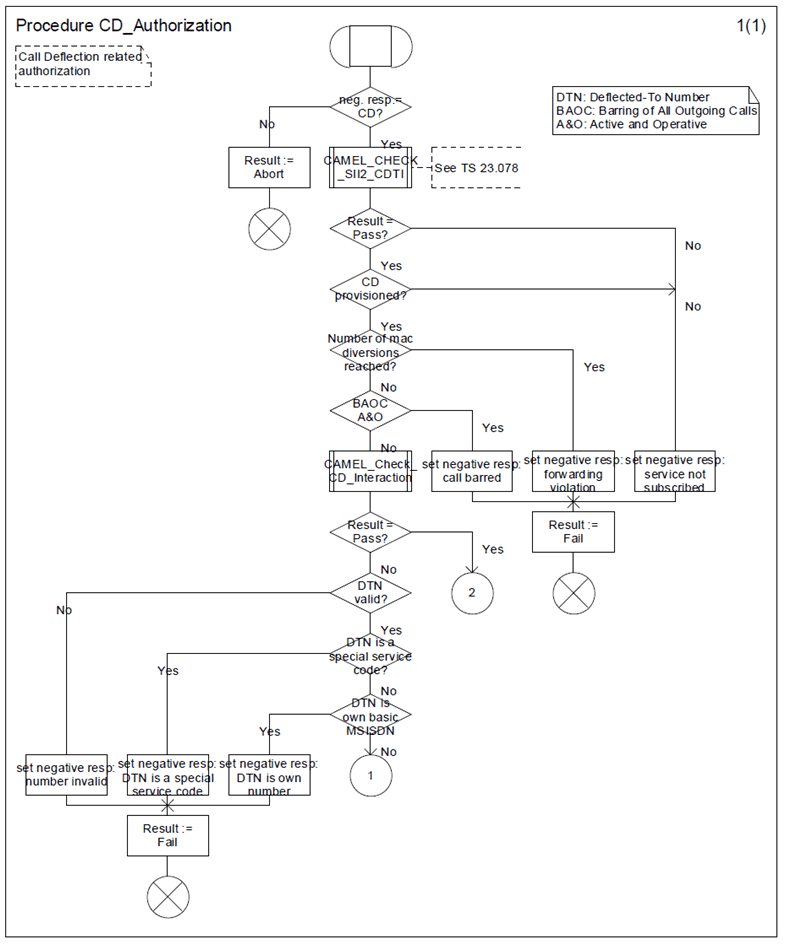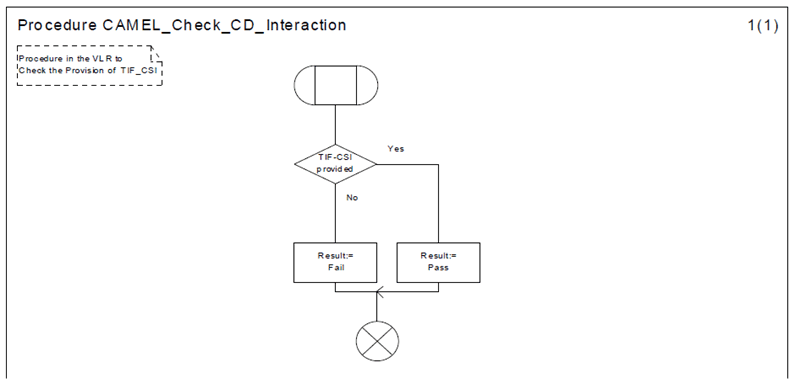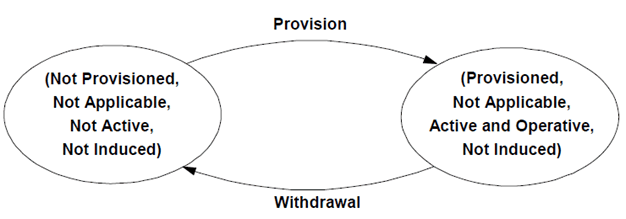Content for TS 23.072 Word version: 18.0.0
7 Functions of the serving VLR
8 Interaction with other supplementary services
9 Interaction with other network features
10 Information stored in the HLR
11 State transition model
12 Transfer of information from HLR to VLR
13 Information stored in the VLR
14 Handover
$ Change history
7 Functions of the serving VLR p. 15
The functions of the serving VLR are specified in TS 23.018. The procedure specific to the CD supplementary service is specified in this clause.
7.1 Procedure CD_Authorization p. 15
This procedure examines the authorization related to Call Deflection.
The procedure CAMEL_Check_CD_Interaction is specific to CAMEL phase 2. If CAMEL phase 2 is not supported in the VLR, processing continues from the "No" exit of the test "Result=Pass?".
The procedure CAMEL_CHECK_SII2_CDTI is specific to CAMEL Phase 3 or higher. If CAMEL Phase 3 or higher is not supported in the VLR, processing continues from the "Yes" exit of the test "Result = Pass?".
7.2 Procedure CAMEL_Check_CD_Interaction p. 15
This procedure examines whether a Translation Interaction Flag (TIF-CSI) is provided for the served subscriber.


8 Interaction with other supplementary services p. 18
8.1 Line Identification services p. 18
If the serving MSC receives an Answer message from the destination C network after the successful invocation of the call deflection supplementary service, the process MAF039 of TS 23.081 shall be performed. Refer to Process ICH_MSC of TS 23.018 for further details.
8.2 Call Forwarding services p. 18
No impact.
8.3 Call Waiting p. 18
The MS may send a CD Request message for an incoming waiting call. Refer to procedure Process_Call_Waiting_MSC of TS 23.018 for further details.
8.4 Call Hold p. 18
No impact.
8.5 Multi Party (MPTY) p. 18
No impact.
8.6 Closed User Group p. 18
The serving VLR shall perform the forwarding CUG authorisation as defined in TS 23.085 while processing a call deflection request. Refer to Process ICH_VLR of TS 23.018 for details.
8.7 Advice of Charge (AoC) p. 18
No impact.
8.8 Call Barring Services p. 18
If a call deflection request is processed, the serving VLR shall check whether the requested deflected-to number contradicts active and operative outgoing barring programs. Refer to Procedure CD_Authorization (Figure 6.6) for details.
8.9 Explicit call transfer (ECT) p. 18
If in the originating network ECT is invoked (one call answered, the other alerting), the serving MSC shall map a redirection number parameter received in the ECT notification into the calling identity parameter of the outgoing IAM message. Refer to TS 23.091 (Interaction of Call Forwarding on mobile subscriber busy due to UDUB and explicit call transfer) for details.
8.10 Completion of Calls to Busy Subscriber (CCBS) p. 18
If a call is deflected to a NDUB destination, the serving MSC shall set the diagnostic to "CCBS not possible" when it releases the call towards the calling network. Refer to Process ICH_MSC of TS 23.018 for further details.
The serving MSC shall remove the CCBS call Indicator from the IAM message when deflecting a call.
9 Interaction with other network features p. 19
9.1 Customised Applications for Mobile network Enhanced Logic (CAMEL) p. 19
If the served subscriber is provided with a Translation Information Flag (TIF-CSI) as defined in TS 23.018 the VLR shall neither perform checks regarding the validity of the deflected-to number nor perform interactions with BOIC and BOIC-exHC barring programs. Refer to Procedure CD_Authorization for further details.
9.2 Support of Optimal Routeing p. 19
The procedures for optimal routeing of late call forwarding shall apply if the Call Deflection supplementary service is invoked. Refer to TS 23.079 for further details.
10 Information stored in the HLR p. 19
The following logical states are applicable for the Call Deflection service (refer to TS 23.011 for an explanation of the notation):
| Provisioning State | Registration State | Activation State | HLR Induction State |
|---|---|---|---|
| (Not Provisioned, | Not Applicable, | Not Active, | Not Induced) |
| (Provisioned, | Not Applicable, | Active and Operative, | Not Induced) |
The HLR shall store:
-
the logical state of the Call Deflection service (which shall be one of the valid states listed above) on a per subscriber basis.
-
the subscription option "notification to the calling party" on a per subscriber basis;
This subscription option takes one of the following values:
- no notification;
- notification.
-
the subscription option "MSISDN of the served subscriber can be presented to the forwarded-to subscriber" on a per subscriber basis;
This subscription option takes one of the following values:
- presentation restricted;
- presentation allowed.
-
the subscription option "notification to the calling party" on a per subscriber basis;
This subscription option takes one of the following values:
11 State transition model p. 20
Figure 11.1 shows the successful cases of transition between the applicable logical states of the Call Deflection service. The state changes are caused by actions of the service provider.
Note that error cases are not shown in the diagram as they normally do not cause a state change. Additionally, some successful requests may not cause a state change and are therefore not shown in the diagram.

12 Transfer of information from HLR to VLR p. 20
If the provisioning state for the Call Deflection service is "Provisioned" then when the subscriber registers on a VLR the HLR shall send that VLR information about the logical state of the Call Deflection service In this case the following additional information shall be sent to the VLR:
- subscription options "notification to the calling party" and "MSISDN of the served subscriber can be presented to the forwarded-to subscriber".
- Translation Information Flag (TIF-CSI) if contained in the CAMEL subscriber data of the served subscriber (refer to TS 23.078 for further details).
13 Information stored in the VLR p. 20
For the supplementary service Call Deflection the VLR shall store the service state information, information about the subscription options "notification to the calling party" and "MSISDN of the served subscriber can be presented to the forwarded-to subscriber" and the Translation Information Flag (TIF-CSI) received from the HLR.
14 Handover p. 20
Handover will have no impact on the control procedures and the operation of the service.